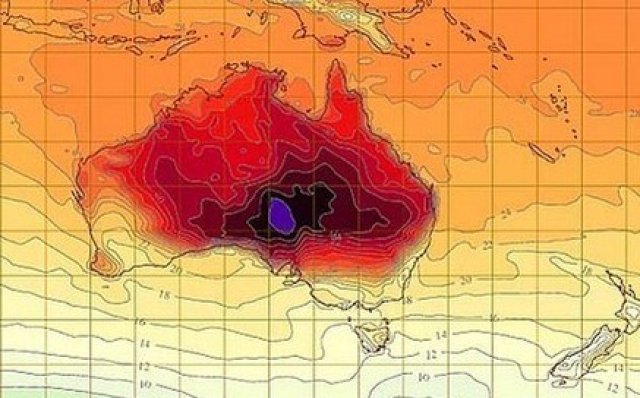
As this century progresses, the record high temperatures experienced across Australia in the past few months will no longer be dangerous departures from the norm, but a regular feature of Australian summers. This is one of the conclusions reached in a draft of the fifth assessment report of the United Nations Intergovernmental Panel on Climate Change (IPCC), which was leaked and published online last month.
In a chapter on the regional impacts of climate change, the leaked report said of Australia: “The frequency of very warm days is virtually certain to increase through this century, across the whole country. For an arid to semi-arid country such as Australia, this will put further stress on already strained water resources.”
Alongside the water issue, an increase in very warm days also suggests a rise in the frequency and intensity of bushfire emergencies.
Combining evidence from past trends with computer modelling, the draft report also projects that Australia will be subject to longer droughts, less winter rainfall and “an expansion of the sub-tropical dry zone”.
It also refers to strong evidence that climate change is already having a big impact on the continent. The draft report notes “sustained long term declines” in rainfall in southern Australia and far higher air temperatures, which “exacerbated the recent drought situation over south-east Australia”.
By the end of the century, the draft IPCC report says, southern Australia will likely have at least 10% less rainfall and “more persistent” dry spells. It projects average temperature rises of 3C to 4C in northern and central Australia, with “slightly less warming” in the south of the country. A mere 1C average temperature rise is thought to equate to a 15% fall in yearly water inflow into the Murray-Darling basin.
On a global scale, the report says it is “very likely there will be a continued loss of sea ice extent in the Arctic, decreases in snow cover, and reductions of permafrost at high latitudes of the Northern Hemisphere” in the near term.
It’s not just Australia that will be badly affected by more extreme weather. The report says it is “virtually certain that, in most places, there will be more hot and fewer cold temperature extremes as global temperature increases”. In most places, it says it is likely high temperature extremes that now occur every 20 years will take place every 10 years. But in some regions, 20-year extremes could take place every one or two years.
The IPCC report was leaked by US climate change denier Alec Rawls, who had access to the draft after he signed up as an IPCC reviewer. Rawls said he leaked the report because it included a “game changing admission” that cosmic rays from outer space, rather than greenhouse gas emissions, were responsible for driving temperatures up.
Rawls’ crackpot claim was repeated by several denier websites and journalists, but SkepticalScience.com said the weight of evidence suggests cosmic rays are probably having a cooling effect and Rawls had “completely misrepresented the IPCC report”.
The report actually says: “There is high confidence that the effect [of cosmic rays] is too weak to have any significant climatic influence during a solar cycle or over the last century.”
In truth, the draft report completely dismisses the claims of climate change deniers. The last IPCC report, published in 2007, said it was “highly likely” human activity was responsible for global warming. The draft report upgrades this to “virtually certain”. The leaked report also expresses “very high confidence” that so-called natural forcings, which include changes in the heat from the sun or other naturally occurring climate variations, “contribute only a small fraction” to the problem.
The final version of the UN IPCC report won’t be released until 2014. Report authors have warned that the draft document may be significantly revised and updated before its final release.
However, past IPCC reports have been marked by conservative assessments, which exclude new evidence and research. The 2007 report was outdated by new, alarming evidence almost as soon as it was released. The next report also looks certain to be based on outdated science, in effect understating the intensity of the climate threat.
For example, the draft report did not include any assessment of the climate impact of the huge amounts of greenhouse gasses found to be escaping from melting soils (or permafrost) in the northern hemisphere. This is no small omission: in November a UN Environment Programme report estimated that by 2100 up to 40% of global emissions could come from permafrost melt.
The draft IPCC report’s projections for future temperature rises are far lower than other recent studies. The IPCC’s absolute worst case scenario says global temperatures will rise by 2.6C to 4.8C by 2100. But in a November public lecture, renowned British climate scientist Kevin Anderson said on current trends the world is practically certain to pass 4C of warming by 2050, or even sooner.
Comments
conchie replied on Permalink